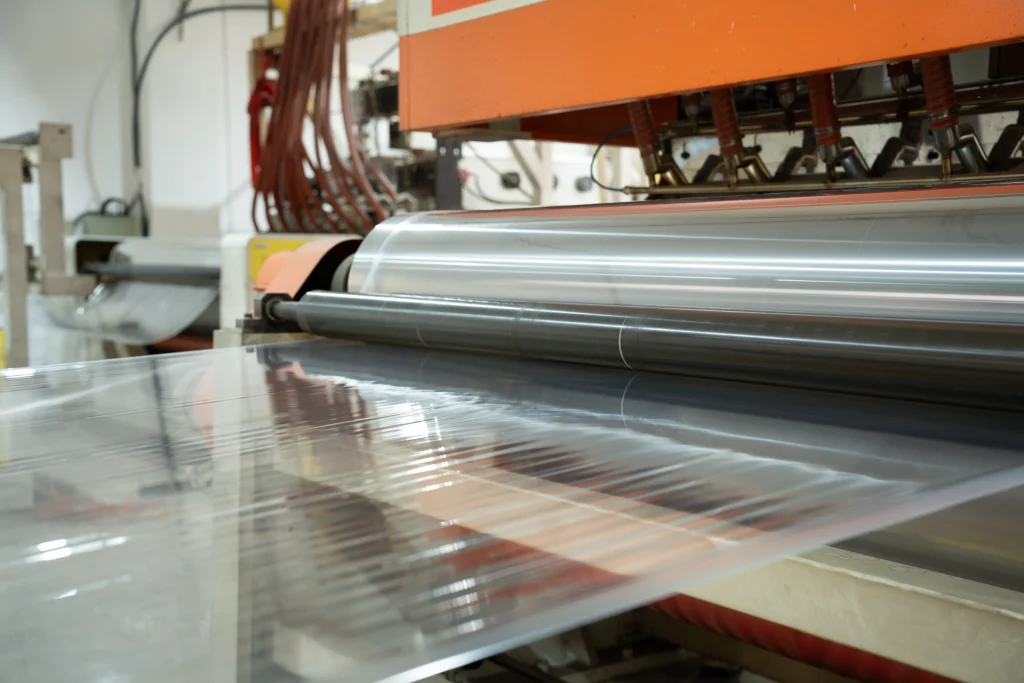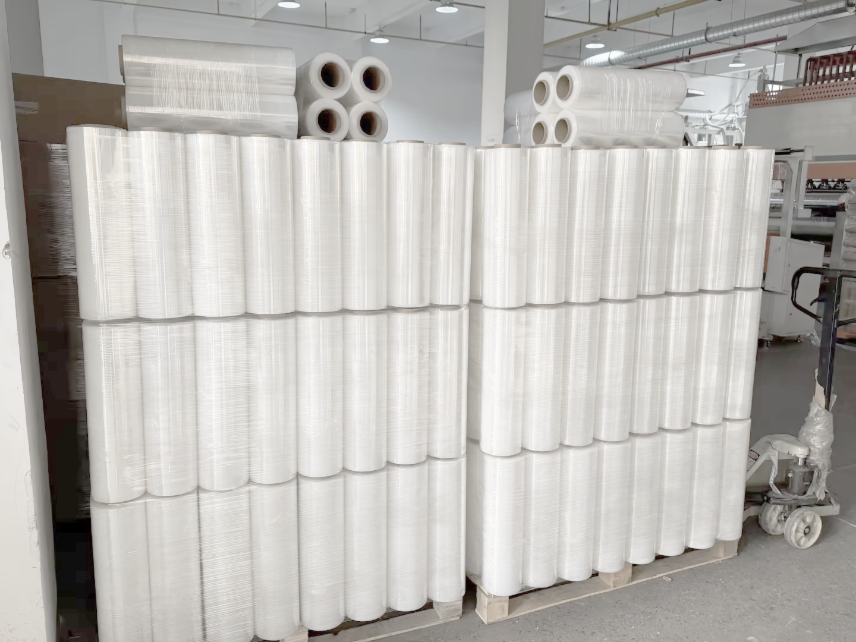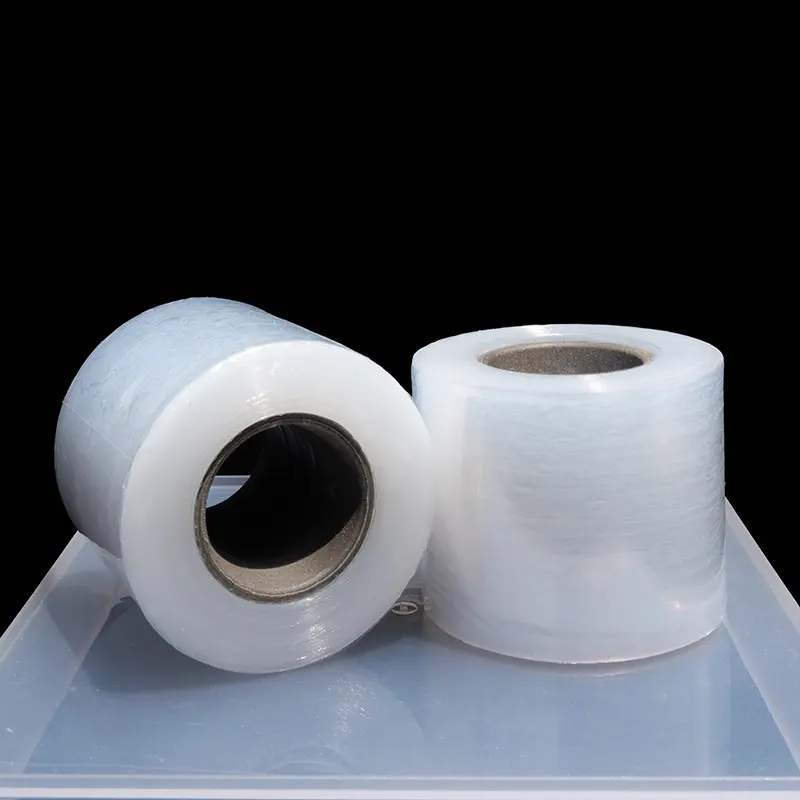¿Qué es el film estirable? ¿Cómo evaluar su calidad?
Release time: 2025-10-14
Tabla de contenido
Stretch film, also known as pallet wrap or stretch wrap, is an essential packaging material used for securing, bundling, and protecting products during transportation and storage. Made primarily from linear low-density polyethylene (LLDPE), this stretchable plastic film ensures that goods remain stable, secure, and protected from contaminants. With many different types available on the market, it can be difficult to know which one is the best quality for your needs. In this guide, we’ll explore everything you need to know about stretch film, how to judge its quality, and how to choose the right type for your business.
¿Qué es el film estirable?
Stretch film is a highly flexible and durable plastic film used for wrapping goods and pallets to keep them secure and prevent damage during handling and shipping. This film has the unique ability to stretch significantly, allowing it to conform tightly to the shape of items, holding them in place while protecting them from external elements such as dirt, moisture, and scratches.
There are two main types of stretch film: manual stretch film (used for hand-wrapping) and película estirable para máquina (designed for use with automated stretch wrapping machines). Both types are available in different thicknesses and widths, catering to various packaging requirements.
Tipos de película estirable
Understanding the different types of stretch film can help you choose the best one for your specific needs. Here’s a breakdown of the most common options:
- Hand Stretch Film: This type is designed for manual wrapping. Ideal for small-scale operations or irregular packaging, hand stretch film is available in various thicknesses and lengths. It’s often used with a hand-held dispenser, making it easy to apply.
- Película estirable para máquina: This stretch film is designed for use with stretch wrapping machines, which offer faster, more efficient wrapping for large-scale operations. Machine stretch film is available in different gauges and offers consistent wrapping tension.
- Película preestirada: Pre-stretched stretch film has been pre-stretched during the manufacturing process, making it easier to apply with less effort. It offers a higher yield and is often used in automated wrapping systems.
- Película estirable de color: While transparent stretch film is the most common, colored stretch film (such as black, blue, or green) is also available. Colored stretch film can provide added privacy, security, and UV protection.
Usos comunes de la película estirable
Stretch film is widely used across various industries due to its versatility and cost-effectiveness. Some of the common uses include:
- Palletizing and Securing Goods: Stretch film is most commonly used to wrap goods on pallets, preventing items from shifting or toppling during transportation. This provides both stability and safety.
- Protective Wrapping: Stretch film acts as a protective barrier against dirt, moisture, and environmental contaminants, making it ideal for shipping fragile or sensitive goods.
- Bundling Products: Stretch film is often used to bundle products together, such as consolidating smaller boxes into larger units for easier handling.
- Tamper-Evident Wrapping: Stretch film’s transparent nature allows for easy inspection of wrapped items. Additionally, it serves as a deterrent against tampering, providing security during transit.
How to Judge the Quality of Stretch Film
When selecting stretch film, quality is paramount. The following key factors can help you judge the quality of the stretch film you’re considering:
1. Tensile Strength
Tensile strength refers to the amount of force the film can withstand before it breaks. High-quality stretch films should have strong tensile strength to prevent tearing during wrapping and handling. When testing tensile strength, try pulling the film and see how much force is required to break it.
2. Elongation (Stretchability)
Elongation is the percentage by which stretch film can stretch without breaking. A higher elongation rate indicates better stretchability. High-quality stretch films typically have elongation rates between 250% and 300%, allowing them to conform to various product shapes and offer optimal coverage with minimal material.
3. Cling Quality
Cling quality refers to the ability of the film to adhere to itself without the need for adhesives. This property is essential for ensuring a secure wrap. Quality stretch films exhibit excellent cling qualities, which prevents the wrap from loosening during transit. The film should stick to itself tightly and hold its shape.
4. Puncture Resistance
Puncture resistance is crucial, especially when wrapping sharp or irregularly shaped items. A high-quality stretch film should be resistant to punctures and tears, even under heavy handling. To test puncture resistance, try applying pressure to the film and see how well it holds up.
5. Film Thickness
Thickness, often measured in mils (thousandths of an inch), impacts the durability and strength of the stretch film. However, thicker films are not always better. It’s essential to find a balance between strength and cost. High-quality films are typically thinner but are made from stronger materials that enhance their durability without compromising stretchability.
6. UV Resistance
UV-resistant stretch films are designed to withstand prolonged exposure to sunlight without degrading. This is essential for products stored outdoors or exposed to UV rays during transportation. UV inhibitors help protect goods from UV damage, such as fading, degradation, or brittleness.
7. Transparency
The transparency of stretch film allows for easy inspection of wrapped products. High-quality stretch film is clear and free from cloudiness or distortion, ensuring that items inside can be easily viewed for inventory or inspection purposes.
8. Ease of Application
The ease with which stretch film can be applied is another factor that determines its quality. High-quality films should unwind smoothly and stretch evenly without tangling or tearing. Look for films that work well with the equipment you’re using, whether it’s a hand-held dispenser or a fully automated machine.
How to Choose the Right Stretch Film for Your Needs
Selecting the right stretch film depends on your specific packaging needs. Here’s a quick guide to help you choose:
- For Manual Wrapping: Hand stretch films are best for small, irregular packaging. Look for films with good elongation and cling properties for ease of use.
- For Large-Scale Operations: If you’re using a stretch wrapping machine, choose machine stretch film that offers high tensile strength, puncture resistance, and consistent stretchability.
- For Outdoor Use: UV-resistant stretch film is recommended for products that will be stored outdoors or exposed to sunlight.
- For Budget-Friendly Options: Pre-stretched films are a cost-effective solution, offering good performance at a lower price.
Conclusión
Stretch film is a vital tool for securing, protecting, and stabilizing products during shipping and storage. By understanding the different types of stretch film and the key quality factors like tensile strength, elongation, and puncture resistance, you can make an informed decision about which film is best suited for your packaging needs. Whether you’re wrapping products manually or using a machine, choosing the right stretch film ensures the safety and security of your goods throughout the supply chain.
By optimizing for durability, flexibility, and protection, high-quality stretch film can streamline your packaging process, reduce costs, and provide reliable results every time.



